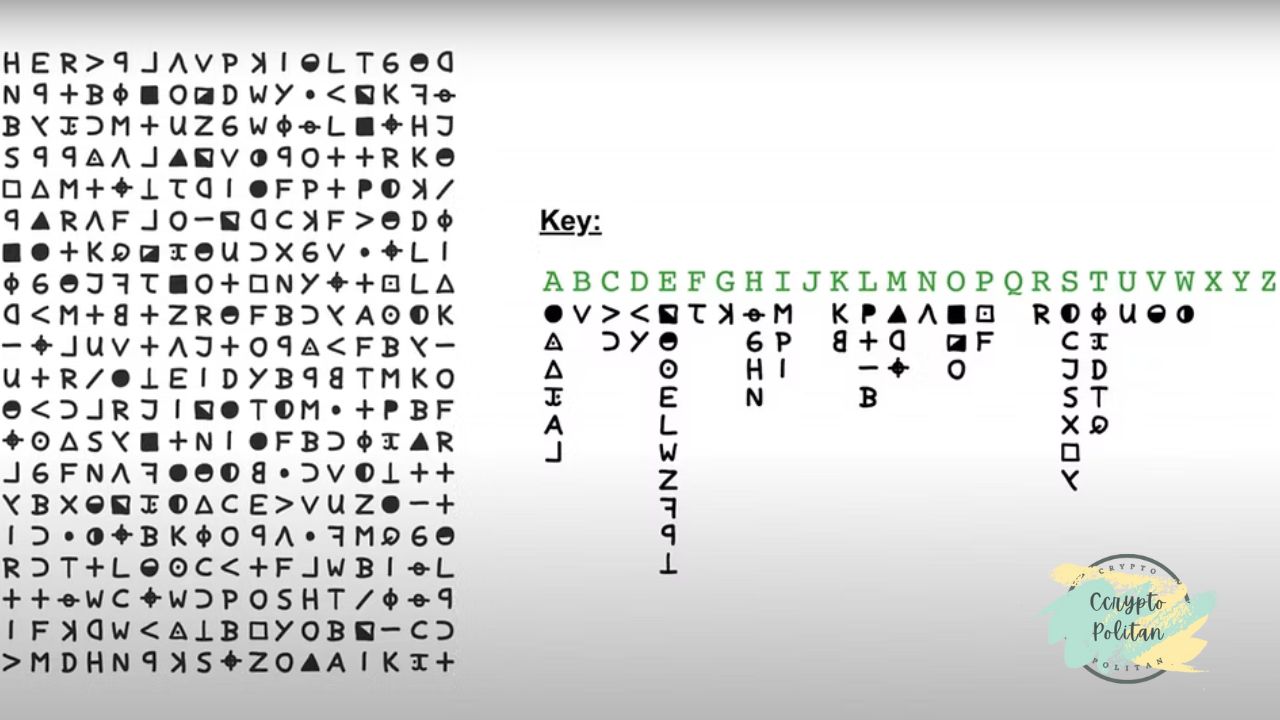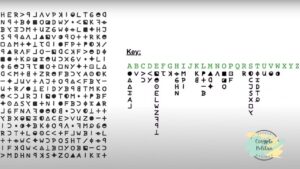The Caesar cipher stands as one of history’s most enduring encryption methods, bridging the gap between ancient military strategy and modern cybersecurity education. Named after Julius Caesar, who used it to protect his military communications around 58-50 BC, this simple yet effective cipher has fascinated cryptographers, historians, and puzzle enthusiasts for over two millennia.
Whether you’re a student learning about cryptography, a history buff exploring ancient Rome, or someone curious about how codes work, understanding the Caesar cipher provides valuable insights into both historical communication methods and fundamental encryption principles that still influence modern security systems.
What is the Caesar Cipher?
The Caesar cipher is a substitution cipher where each letter in the plaintext is shifted a certain number of places down or up the alphabet. For example, with a shift of 3 (the shift Caesar himself reportedly used), the letter ‘A’ becomes ‘D’, ‘B’ becomes ‘E’, and so forth.
This encryption method belongs to the broader category of monoalphabetic substitution ciphers, where each letter of the alphabet is consistently replaced with another letter throughout the entire message.
Basic Caesar Cipher Example
Let’s encrypt the word “HELLO” using a shift of 3:
- H → K
- E → H
- L → O
- L → O
- O → R
The encrypted message becomes “KHOOR.”
Historical Background and Julius Caesar’s Use
Julius Caesar employed this cipher technique during his military campaigns in Gaul (modern-day France). According to the Roman historian Suetonius, Caesar used a shift of 3 positions to encode sensitive military correspondence, ensuring that intercepted messages would appear as meaningless text to enemies.
The cipher proved particularly effective in Caesar’s time because:
- Limited literacy: Few people could read Latin, making the encrypted text even more secure
- No systematic cryptanalysis: Mathematical approaches to code-breaking didn’t exist
- Speed and simplicity: Messages could be quickly encoded and decoded by trusted officers
Caesar’s Strategic Advantage
By protecting his communications, Caesar maintained operational security that contributed to his military successes. His encrypted messages covered troop movements, supply logistics, and strategic plans—information that could have been catastrophic if intercepted by Gallic tribes or political rivals in Rome.
How the Caesar Cipher Works: Step-by-Step Process
Encryption Process
- Choose a shift value (also called the “key”)
- For each letter in your message:
- Find its position in the alphabet (A=0, B=1, C=2, etc.)
- Add the shift value
- If the result exceeds 25, wrap around to the beginning (modulo 26)
- Replace the original letter with the new letter
Decryption Process
Decryption simply reverses the process:
- Use the same shift value
- For each encrypted letter:
- Find its position in the alphabet
- Subtract the shift value
- If the result is negative, wrap around to the end
- Replace with the original letter
Mathematical Formula
For those interested in the mathematical representation:
- Encryption: E(x) = (x + n) mod 26
- Decryption: D(x) = (x – n) mod 26
Where x is the letter’s position (0-25) and n is the shift value.
Caesar Cipher Variations and Related Ciphers
ROT13
The most famous Caesar cipher variation uses a shift of 13. ROT13 has a unique property: applying it twice returns the original text, making it self-reciprocal. This makes ROT13 popular in online forums for hiding spoilers or potentially offensive content.
Atbash Cipher
While not technically a Caesar cipher, the Atbash cipher shares similar principles. It replaces each letter with its mirror position in the alphabet (A↔Z, B↔Y, C↔X, etc.).
Keyword Caesar Cipher
This variation starts the shifted alphabet with a keyword, removing duplicate letters, then continues with the remaining alphabet letters.
Strengths and Weaknesses of the Caesar Cipher
Strengths
- Simplicity: Easy to understand and implement
- Speed: Quick encryption and decryption
- Historical significance: Demonstrates fundamental cryptographic principles
- Educational value: Perfect for learning basic cryptography concepts
Weaknesses
- Limited key space: Only 25 possible shifts (shift of 0 provides no encryption)
- Frequency analysis vulnerability: Letter frequency patterns remain unchanged
- Pattern recognition: Repeating words create identical encrypted patterns
- Brute force susceptible: All 25 possibilities can be tested quickly
Breaking the Caesar Cipher: Cryptanalysis Methods
Frequency Analysis
English text has predictable letter frequencies. The letter ‘E’ appears most frequently (~12.7%), followed by ‘T’ (~9.1%), ‘A’ (~8.2%), and so on. By analyzing which letters appear most often in the encrypted text, cryptanalysts can deduce the shift value.
Brute Force Attack
Since there are only 25 possible shifts, trying each one systematically will eventually reveal the correct decryption. Modern computers can test all possibilities in milliseconds.
Index of Coincidence
This statistical method compares the frequency distribution of letters in the encrypted text with expected distributions in the target language.
Modern Applications and Educational Uses
Programming Education
The Caesar cipher serves as an excellent introduction to:
- Algorithm design
- Modular arithmetic
- String manipulation
- Loop structures
- Input validation
Cybersecurity Training
Security professionals use Caesar cipher examples to demonstrate:
- Cryptanalysis techniques
- The importance of key management
- Evolution of encryption methods
- Vulnerability assessment
Puzzle Games and Entertainment
Many escape rooms, puzzle games, and educational activities incorporate Caesar ciphers because they’re challenging enough to be engaging but simple enough for non-experts to solve.
Implementing Caesar Cipher: Programming Examples
Python Implementation
def caesar_encrypt(text, shift):
result = ""
for char in text:
if char.isalpha():
ascii_offset = ord('A') if char.isupper() else ord('a')
result += chr((ord(char) - ascii_offset + shift) % 26 + ascii_offset)
else:
result += char
return result
def caesar_decrypt(text, shift):
return caesar_encrypt(text, -shift)
Key Programming Concepts
- Modular arithmetic for wraparound
- ASCII value manipulation for character shifting
- Conditional logic for handling uppercase, lowercase, and non-alphabetic characters
Caesar Cipher vs. Modern Encryption
While the Caesar cipher is cryptographically obsolete, understanding its principles helps appreciate modern encryption evolution:
From Caesar to AES
- Caesar cipher: Single substitution, 25 possible keys
- DES: Block cipher, 56-bit keys (72 quadrillion possibilities)
- AES: Block cipher, up to 256-bit keys (more possibilities than atoms in the observable universe)
Fundamental Concepts That Persist
- Key management: Secure key distribution remains crucial
- Algorithm vs. implementation: Security depends on both cipher strength and correct implementation
- Trade-offs: Balancing security, performance, and usability
Teaching and Learning Resources
Educational Activities
- Hand encryption exercises: Practice with pen and paper
- Programming challenges: Implement encryption and decryption functions
- Historical research: Study Caesar’s actual use of the cipher
- Cryptanalysis practice: Break Caesar-encrypted messages
Online Tools and Simulators
Various websites offer Caesar cipher tools for experimentation, though creating your own implementation provides deeper understanding.
The Caesar Cipher’s Legacy in Cryptography
The Caesar cipher’s influence extends far beyond its historical origins. It introduced several concepts that remain central to modern cryptography:
Systematic Approach to Secrecy
Caesar’s cipher demonstrated that mathematical rules could protect information, establishing cryptography as a systematic discipline rather than ad-hoc secret writing.
Key-Based Security
The shift value concept introduced the crucial principle that security should depend on a secret key, not on keeping the algorithm secret—a principle known as Kerckhoffs’s principle in modern cryptography.
Foundation for Complex Ciphers
Many sophisticated encryption methods build upon substitution principles first demonstrated in the Caesar cipher, including:
- Polyalphabetic ciphers (like Vigenère)
- Block ciphers (like AES)
- Stream ciphers (like RC4)
Conclusion
The Caesar cipher represents far more than a simple historical curiosity. As one of the earliest systematic approaches to encryption, it established fundamental principles that continue to influence modern cryptography. While its security limitations make it unsuitable for protecting contemporary communications, its educational value remains immense.
For students, programmers, and security professionals, mastering the Caesar cipher provides essential groundwork for understanding more complex encryption systems. Its simplicity makes cryptographic concepts accessible, while its weaknesses illustrate why sophisticated modern ciphers became necessary.
Whether you’re exploring the strategic brilliance of Julius Caesar, learning your first programming concepts, or beginning a journey into cybersecurity, the Caesar cipher offers an perfect entry point into the fascinating world of secret communications. Its 2,000-year journey from Roman battlefields to computer science classrooms demonstrates how foundational ideas in mathematics and logic transcend their original contexts to remain relevant across millennia.
The next time you encounter encrypted data or hear about cybersecurity breaches, remember that it all started with a Roman general who needed to keep his battle plans secret—and his simple but revolutionary solution continues to teach us about the eternal challenge of protecting information in an uncertain world.









